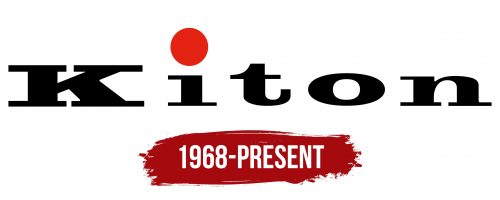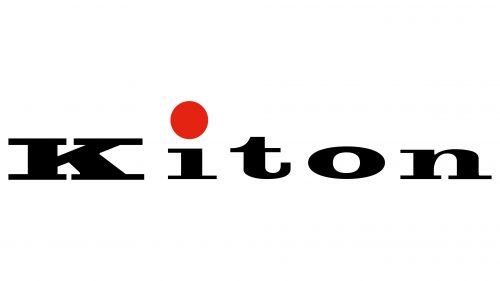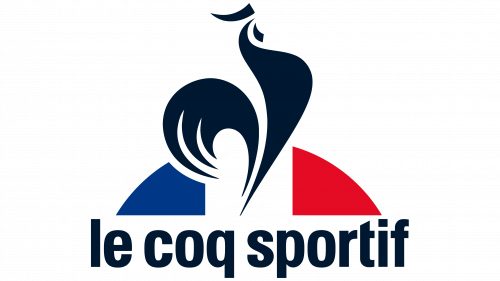The Kiton logo is like the rising sun over the expanse of the land. The emblem transports the viewer to the past, where the stylish and modern suits of the brand originated. The symbols in the inscription reveal elegance and the unique tailoring features that give the brand’s models their distinctiveness.
Kiton: Brand overview
Ciro Paone established the brand Kiton in 1968 in the small town of Arzano in the Italian province of Campania. This occasion was a pivotal point in the brand’s history. Ciro Paone, a hereditary tailor, decided to start a business that exemplified the finest customs of Neapolitan tailoring. The company purposefully chose to locate in Arzano because the area was well known for its textile traditions and the skill of its tailors.
“Kiton” comes from the ancient Greek word “chiton,” which refers to an ancient tunic. Paone’s desire to develop a brand that united traditional elegance with contemporary style was reflected in this decision.
The firm has always concentrated on creating finely crafted men’s suits by hand. Paone set the greatest standards of excellence to represent the brand. The best textiles were used to produce each suit, which took dozens of hours of labor by extremely talented artisans by hand.
In the 1970s, the company started growing and expanding its market share abroad. The business began exporting its goods to Japan and the USA, where customers greatly valued the superior quality and sophisticated Italian design. This action was a major step in making the brand a well-known luxury apparel name on a global scale.
In the 1980s, the firm developed new ideas for tailoring and fabric production. The company started employing unusual materials, such as ultra-fine wool, which made it possible to make incredibly comfortable suits of the highest caliber. While upholding its high-quality standards, the brand also extended its line to include shirts and ties throughout this time.
The company greatly increased its production capacity in the 1990s. The business maintained its dedication to handicraftsmanship while investing in modern machinery and technology. Additionally, the brand started aggressively expanding its retail network by establishing boutiques in well-known global locations.
In the 2000s, the firm introduced multiple new product lines to further its growth. The company debuted its inaugural women’s collection in 2002. This achievement broadened the brand’s target market and product line. With the K line, the firm targeted a younger demographic in 2007. The corporation deliberately chose to broaden its product line on this date.
In the 2010s, the brand added shoes, accessories, and fragrances to its lineup to provide its customers with a wide selection of luxury goods.
To uphold and perpetuate the customs of Neapolitan tailoring skills, the company established a high tailoring school in Naples in 2014.
2015 saw the firm open a new flagship location on London’s New Bond Street, furthering its global reach. The brand’s standing in the significant European luxury goods market was enhanced by this occasion.
The company commemorated the 60th anniversary of the family business’s founding in 2016 (although the brand was formally founded in 1968). The firm unveiled a unique collection honoring its heritage and principles to celebrate this milestone.
A 500-square-meter new showroom opened in Milan in 2017. This area became a crucial hub for client and press interactions and collection presentations.
In 2018, the brand built new boutiques in major global locations like Tokyo and Paris as part of its ongoing effort to grow its retail network.
Aiming for a younger demographic, the company debuted a new collection in 2019 called KNT (Kiton New Textures), which has more casual styles made using cutting-edge fabrics.
Notwithstanding the issues faced by the world, the firm kept growing in 2020, concentrating especially on improving its online presence and digital business transformation.
The corporation expanded its footprint in the Asian market in 2021, particularly in China, by establishing additional locations and forming alliances with regional merchants.
In 2022, the brand unveiled a revised sustainability plan that prioritized using environmentally friendly materials and adopting more productive production techniques.
In 2023, the company added a new line of timepieces to its accessories collection, working with a well-known Swiss watchmaker to develop the range.
Meaning and History
What is Kiton?
It is an Italian luxury fashion house headquartered in Arzano, Campania, founded by Ciro Paone. Known for exquisite craftsmanship and quality, it specializes in high-end men’s and women’s tailoring, ready-to-wear, and accessories. The brand is known for its handmade suits, which are considered among the world’s finest. The company strictly monitors quality, using only the most luxurious materials and employing skilled artisans to create each garment. The brand’s commitment to excellence has secured clients worldwide, including business leaders, politicians, and celebrities.
1968 – today
The company logo consists of the name written in a font with thin, elongated serifs, giving the letters a respectable appearance. The design hints at business suits, which are the brand’s specialty.
Instead of a dot over the “i,” a red sun is used. This sun evokes associations with warmth, wide horizons, and hot expanses, echoing ancient landscapes.
The name’s roots trace back to ancient Greek and Roman outerwear, emphasizing the Italian company’s historical connection to past fashion and traditions.
The company’s founder was a fifth-generation fabric merchant, honoring the old Italian style and adhering to high material quality and tailoring standards. This is reflected in the geometric precision of the logo’s lines.
The name was changed in 1968 to enter the international market. It highlighted the quality and natural fabrics used for making suits, as chitons were made from linen.





